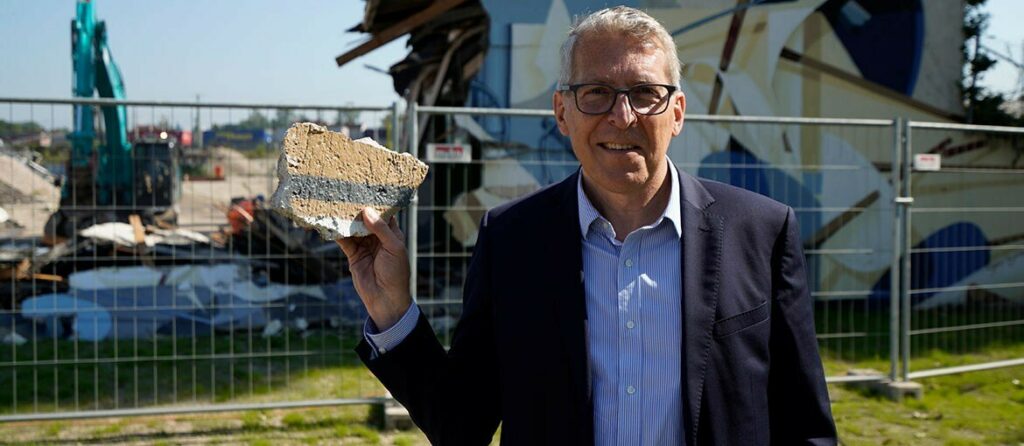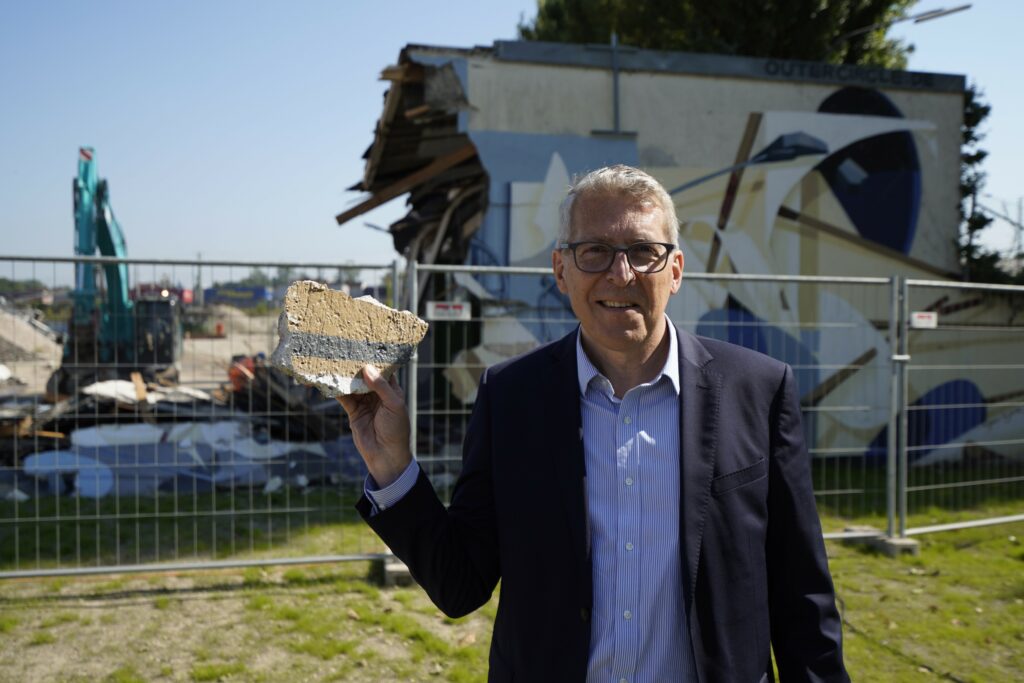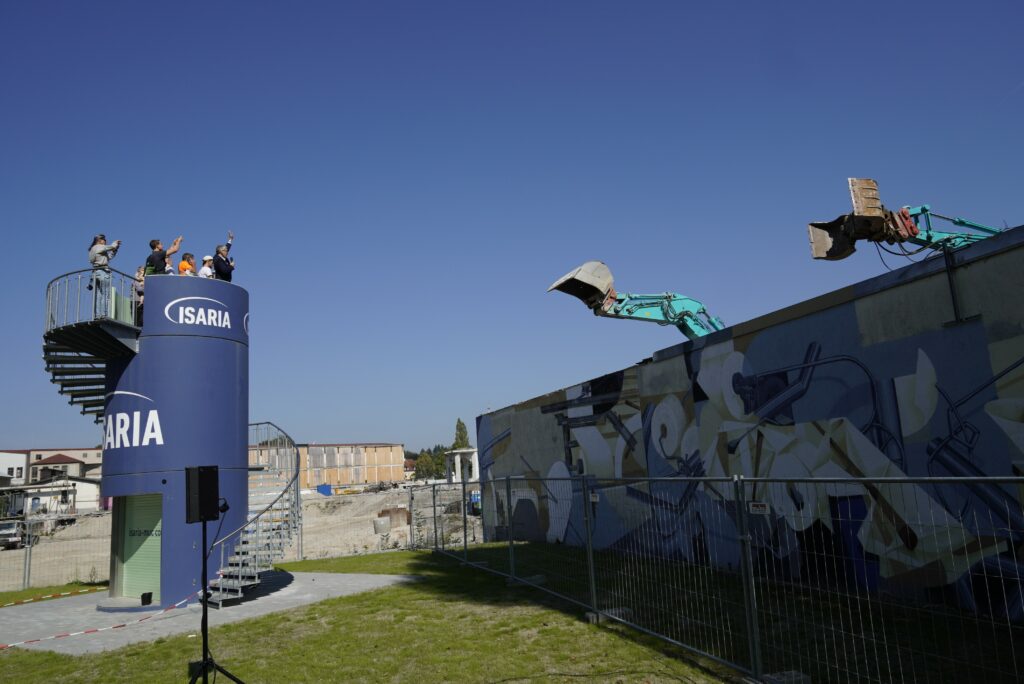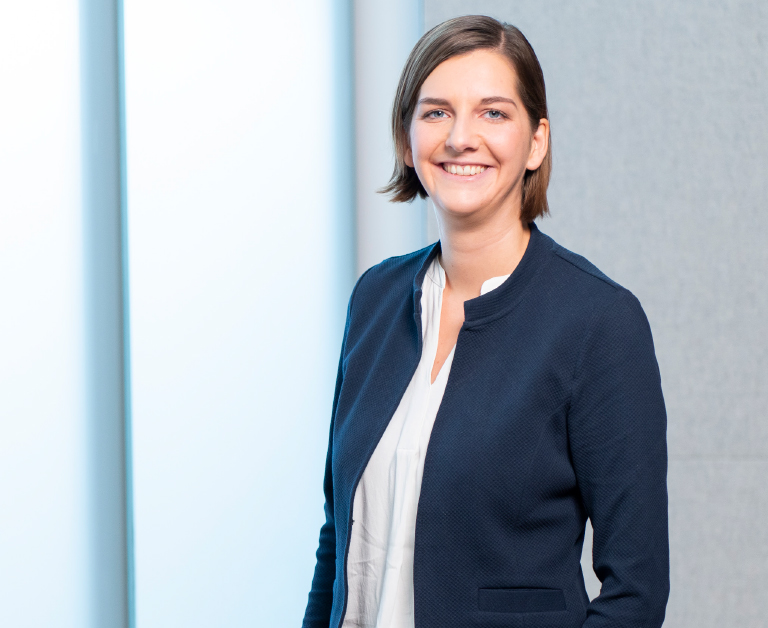The knocking down of the Last Wall Standing was an artistic performance marking the completion of the demolition work
Dachau, August 8, 2021. Wednesday, September 8, 2021 was an historic date for the former Dachau paper mill. The demolition of the former fire station at 11 a.m. also means the disappearance of the final building on the site of tomorrow’s Mühlbachviertel. All other buildings such as the old calender hall will be maintained, refurbished as part of the reconstruction, and made accessible for the people of Dachau with new usage concepts. Interested Dachau residents were invited to experience the demolition live as a tribute to the symbolic importance of the occasion. The project-development company Isaria and Deutsche Wohnen even turned the demolition into an impressive artistic performance thanks to a collaboration with the Outer Circle e.V. art and culture collective.
Artists Johannes Wirthmüller and Adrian Till, together with other graffiti artists, had left a defining mark on the site’s character in recent years. For this reason, Isaria’s Managing Director, David Christmann, wanted allow the two artists create a design for the Last Wall Standing. The artists were clear about their desire to take part: “This work was very important to us. Our art is marking a transformation. We make a connection between the past and the future, give places their own consciousness, and pay tribute to their history. On the Last Wall Standing, we portrayed the paper-making machinery artistically one last time and dedicated the painting to Sepp Baur and Friedrich Thoma, former workers at the mill who have been part of the team overseeing the demolition so far,” said Johannes Wirthmüller and Adrian Till. “We would like to thank Isaria and Deutsche Wohnen for making this possible. Now is the time to cast our gaze toward the opportunities that come from the project’s development,” the pair added.
David Christmann and Michael Gerstner, project manager and Isaria’s authorized officer, are looking forward to the task that they have been entrusted with: “We will be using a lot of instinct and know-how to develop a sustainable town district and turn a former industrial site into a living and appealing center that will enrich Dachau’s old town. Revegetated riverside footpaths, spacious parks, high-quality architecture with a meaningful connection to its surroundings, and refurbished, heritage-listed buildings that will enable a connection to the center and offer space for public life. Another major benefit of the project development is that the town of Dachau will have a long-term partner at its side in the form of Deutsche Wohnen. Deutsche Wohnen will continue to take responsibility for the site in the future and add the housing to its portfolio,” said David Christmann. “We owe our thanks to the artists as well as the project managers Andreas Hanke and Peer Manthe from Campus Ingenieure, who have overseen the demolition work so far in cooperation with the company Karl. They will be organizing the soil rehabilitation and revegetation of the Mühlbach area,” David Christmann added.
Over the next few weeks, there will be work on rehabilitating the soil beneath the demolished former fire station, which in recent years was used as a garage for construction machinery.
About Isaria Projektentwicklung
Isaria specializes in the development of city districts and sustainable buildings in urban areas. From the time of acquisition through to the construction phase, all projects undergo sustainability analyses as a matter of routine. The goal when doing this is always to develop livable urban districts while conserving resources, for example on the MD paper mill site in Dachau, where up to 1,000 apartments are to be built in the coming years. Isaria is part of Quarterback Immobilien AG.
About Deutsche Wohnen
Deutsche Wohnen is one of the leading listed real-estate companies in Europe. The company’s operational focus is on managing and doing business with its portfolio of residential real estate in dynamic metropolitan areas and conurbations in Germany. Deutsche Wohnen sees itself as having a social responsibility and obligation to maintain livable and affordable housing in vibrant neighborhoods and to develop new housing of the same quality.
About Outer Circle
Outer Circle e.V. is a collective founded in Dachau to support contemporary fine art and culture. The collective’s members are passionate about this support and independent artistic work. It is for this reason that they joined together to turn their “inner circle” of associates into Outer Circle, a non-profit organization.
The collective’s main objective is to support art in public spaces, run workshops, and provide information as well as create exhibitions. The collective receives funding from the City of Dachau and the Office of Culture.
Their independent work deals with matters including the transformation of writing and typographic symbolization (commonly known as graffiti). The collective focuses on imagery and designs of an abstract and figurative nature. Simultaneously, it also foregrounds the teaching of theory and practice as well as exchange.
About the demolition and refurbishment so far
The machines have moved over 600,000 metric tons of earth during their work on the MD site. This volume is equivalent to 60,000 elephants. The focus of the work is now primarily on rehabilitating the earth in addition to the demolition. Extensive processing and treatment are necessary in order to turn the former industrial site into a livable town district. Roughly 20 percent of the earth will be treated on site and reused there. This will involve different materials such as concrete, steel, and iron being cleanly separated from each other, some of them being pulverized, and all put into different categories. The processed earth will be used as a source of subsoil and humus as well as recycled concrete which can then be used on other building sites. 80 percent of the remaining material will be unable to be reused on the MD site, however it will be fed back into a sustainable material cycle in road construction or at gravel plants.




